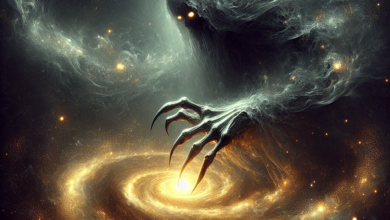Rusting Cities and Forgotten Dreams
In the heart of what was once a vibrant metropolis, towered remnants of architectural dreams now befallen to rust and decay. The skyline, laden with skeletal structures, told stories of zeal and ambition juxtaposed against the despair of neglect. Crumbling bridges, their steel framework corroded and woven with ivy, led to roads that choked beneath wildflowers, breaking through cracks like forgotten hopes.
It was here that Annie Reynolds wandered, her hands wrapped around the camera that had become an extension of her own vision. She was a photographer, seeking the beauty in decay, finding stories where others saw only dereliction. To her, these rotting cities were not just graveyards of the past but canvases painted with memories, whispers of lives long gone.
The warm glow of the morning sun filtered through the rusting girders of the old railway bridge as Annie set her lens towards the horizon. The click of her camera echoed in the stillness as she captured the orange hues reflecting off the tarnished metal. Each photo was a testament not just to the places she documented but to the lives that had once animated them.
In this forgotten part of the world, a particular place held Annie’s attention: the old Central Post Office. It stood, grand yet forlorn, a monument to communication that had long faded. Its windows were veiled with grime, and its clock tower remained frozen in time, a constant reminder of promises unfulfilled. She had always been drawn to it, believing that within its walls lay countless dreams encapsulated in long-forgotten letters and unmailed postcards.
Today, she decided, would be the day she finally entered its remnants. As she pushed open the heavy, rusted door, it creaked a mournful welcome. Inside, the air was thick with dust—each breath drawing in particles of a history that was yearning to be dusted off and remembered. Annie lifted her camera, the lens capturing the beauty wrapped within decay: fractals of light dancing through cracks in the ceiling, shadows pooling in corners where the light dared not tread.
As she ventured deeper, the air shifted around her, becoming electric with unexplained energy. In the center of the once-bustling atrium, a postcard stand loomed—its wood warped, yet the compartments still clung tenaciously to hope. Impulsively, she began to sift through the faded cards, each one a relic of lost times.
“Seaside Escape,” one read, adorned with the image of a sunlit beach. “Wish You Were Here” was scribbled on the back, an untouched fragment of longing that pierced Annie’s heart. She imagined the hands that had penned those words, the stories tethered to each card—people dreaming of escaping their everyday lives, perhaps from the very city that surrounding her now.
Absorbed, she didn’t notice the light shifting until the sun dipped behind a tattered curtain, casting streaks of golden light upon an unruly chaos of dust motes. Her camera hung around her neck as she wandered further, down a corridor that felt like stepping into a temporal wormhole.
At the very end of the hall, she found a small office, the door ajar as if beckoning her closer. Inside, the shadows loomed larger, and she felt the thrill of discovery spike within her. A substantial wooden desk lay imposing at the center, accompanied by a chair that seemed to creak with the weight of history.
Annie stepped in, heart pounding, and settled into the chair. She closed her eyes for a moment, feeling a tide of stories wash over her. It was then that she noticed something out of place—a glimmer from beneath the desk. A small, rusted key lay near the feet of the chair, almost insignificant yet somehow vital.
Curious, she picked it up, brushing off layers of dust. It felt heavy in her palm, its coldness reminiscent of a past rooted in secrets. What did this key unlock? Her mind spun with possibilities as she slipped it into her pocket.
Feeling buoyed by the promise of adventure, Annie returned her focus to the postcards. She carefully selected a few that resonated with her heart, planning to use them for a project she had been contemplating—a visual narrative on dreams deferred and the remnants they left behind.
Outside, the golden hour had advanced, draping the ruins in a soft, ethereal glow. As she prepared to leave, Annie felt the weight of the key pressing against her side, a reminder that her journey had only just begun. Guided by a curiosity that often bordered on obsession, she decided that setting out to discover what the key unlocked would be her next, most earnest pursuit.
Weeks turned into months, as Annie became a fervent explorer of the city’s lesser-known remnants, meticulously photographing abandoned buildings, dilapidated parks, and the bones of rusting machinery. Yet, the Central Post Office remained her true north, rooted deeply in her exploration.
With every visit, she found new treasures: fragments of letters, postcards fluttering in the wind, and the harsh symphony of distant trains echoing through the ruins. The more she discovered, the more the stories inside her sought to be told.
In one corner of the post office, she unearthed an old file from the remains of a cabinet—a collection of business letters from 1945, unmailed requests filled with desperation and hope. The names leaped off the pages, yesteryear’s heroes warped in sepia tones.
“There’s a truth buried here,” she murmured, her fingers brushing gently over the yellowed parchment. “They weren’t just letters. They were dreams.”
In time, what began as a casual interest blossomed into an obsession. With each revelation, she could feel a bond forming—not just with the city, but with the dreams that had once flourished within it. She began to imagine a project that would intertwine her photography with the stories from the past. It would delve deeper than mere documentation; it would resurrect these dreams from their obscurity.
Driven by that vision, Annie descended into research, pouring over archives and databases, seeking out descendants of those who had once wrote letters in hopes of a brighter future. Old newspapers spoke of strikes and protests that had ignited with traumatic fervor, while personal accounts revealed aspirations dashed by time’s relentless march. With every piece of information she collected, her narrative grew richer and deeper.
And amidst it all, the key nestled against her heart, a constant reminder of the door she had yet to open.
One day, as she stood in front of the enormous clock tower of the post office, she felt herself sighing in impatience. “What are you waiting for?” she asked aloud, her gaze hardened with determination.
Finally, with the sunset casting long shadows over the rubble, Annie turned back to the office, the weight of the key heavy in her pocket as she pushed through the door.
She approached the desk where she had first discovered it. Holding her breath, she glanced around, half-expecting some unseen force to rise from the walls. Then, she spotted a rusty lock embedded in the old drawer. Summoning courage, she inserted the key, turning it slowly.
A sharp click echoed in the silence, reverberating through her chest. The drawer creaked open, adrenaline coursing through her veins. Inside lay not just dust, but a treasure trove of letters, unwanted mail, and photographs. These were letters telling the stories of families swept up in the city’s rise and fall—each a piece of the bigger puzzle that had long been forgotten.
Annie felt her heart race as she began to sift through the items, eager to unearth the dreams that these forgotten letters had preserved. There was a picture of a couple dancing under a streetlamp in the old park; a letter from a soldier scribbled in deep longing, detailing the mundane horrors of war; and a postcard with nothing but a simple “I miss you” scrawled on it.
“Thank you,” she whispered to the ghosts of those past, “for sharing this with me.”
She quickly set up her camera, capturing their images, composing them with reverence. This would be the heart of her project—the stories from the once-bustling post office that had carried dreams across miles and years, now ready to be told once more.
Days turned into weeks as Annie intertwined her photography with the narratives from those letters. She drew upon the dreams themselves, creating a multimedia project—an exhibition entitled “Rusting Cities, Forgotten Dreams.”
When the day of the exhibit arrived, she stood anxiously among the shadows of the gallery’s walkways, the walls adorned with her photographs, the echoes of lives once lived filling the space. Viewers moved from piece to piece, their hushed conversations weaving together the tapestry of the lives from which she had drawn inspiration.
Annie’s heart swelled with pride, yet caught in the undertow of anxiety as she waited for the response to her work. Would they feel the same profound connection she had? Would they hear the whispering dreams from the rusting cities?
As the evening morphed into night, she found herself confronting a particularly moving piece—a photograph of the couple dancing, the words from their letter encircling it. Men and women paused beside it, eyes glistening with emotions she had hoped to evoke.
Movement in the corner of the room caught her attention, and she turned to find an elderly woman approaching. Her silver hair flowed softly around her face, framed by a weathered coat; her eyes sparkled as they locked onto the photograph.
“I wrote that letter,” she murmured, voice trembling. “My husband and I… We danced in that park every Friday…”
Annie felt her breath hitch. “You did?”
The woman smiled, steady as the tide. “Before he went to war. We dreamed of a future that felt solid and bright… but life had other plans.”
Emotions swelled between them—strands of shared memory, echoes of dreams woven through time. The woman’s voice grew soft, “I thought those dreams had disappeared with the city, but you’ve brought them back.”
Overwhelmed, Annie pulled her into a comforting embrace, whispering, “You were never forgotten. None of you were.”
The exhibit continued to pulse with life, amplifying whispers of dreams that had been forgotten, where rusting cities morphed into vessels of remembrance. Annie stood still, heart full. The key she had found was more than a ticket to a long-locked drawer; it had become a passage to resonating connections that transcended time and loss.
At that moment, amidst the pulse of rekindled dreams, Annie understood: her city was not merely a canvas of decay but a tapestry of human experience, stitched together with longing and love, loss and hope.
And so, in that rusting city, when the dust began to settle, and the last echoes of the night faded, Annie found herself fulfilled beyond measure, transformed by the stories of forgotten dreams and the worlds waiting to be rediscovered. Each rusted corner, and crumbling stone, became part of the vibrant narrative, waiting for someone to give voice to them once more.
With her heart now ablaze with purpose, Annie stepped back from the gallery, knowing that with each click of her camera, she would continue to unveil the beauty hiding beneath the layers of rust—a journey that would transcend generations, reclaiming the dreams that were never meant to be forgotten.





